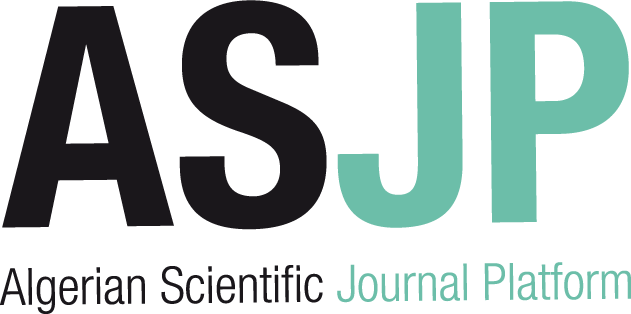| Titre : |
Abatement of pesticide pollution : removal of organo-chlorine pesticide from water environment |
| Type de document : |
texte imprimé |
| Auteurs : |
Yedla,Sudhakar, Auteur ; Dikshit,Anil Kumar, Auteur |
| Editeur : |
New Delhi : Narosa publishing house |
| Année de publication : |
2005 |
| Importance : |
119 p. |
| Présentation : |
ill. |
| Format : |
24 cm |
| ISBN/ISSN/EAN : |
978-81-7319-593-8 |
| Note générale : |
Bibliogr. p. [107]-119 |
| Langues : |
Anglais (eng) |
| Mots-clés : |
Water -- Pollution
Pesticides -- Environmental aspects
Organochlorine compounds |
| Index. décimale : |
632.95.02 Effets des pesticides |
| Résumé : |
Abatement of Pesticide Pollution: Removal of Organochlorine Pesticide from Water Environment unlike conventional Environmental Engineering books, centres on the pesticide pollution in water environment and demonstrates a comprehensive methodology for developing a low cost treatment system for the removal of organo-chlorine pesticides with a specific case study on endosulfan removal. It presents the process of adsorbent selection; its characterization and capacity enhancement and explains various process parameters viz. removal rate constants, equilibrium time, and isotherms in a batch environment. It further elucidates the rate limiting step and removal mechanisms. In simulating the field conditions, the possible interference due to the presence of exogenous parameters like various salts, fertilizers and other pesticides are explained. Desorption and regeneration processes of spent sorbent are explained to optimize the utilization rate. The field application of the system is presented by means of detailed fixed bed studies followed by evaluation of a laboratory scale column in terms of bed-volumes of water treated. Finally it explains the process of eluent management employing various methods. With the demonstration of a complete methodology, this book would help researchers in the area of water treatment systems development for rural applications. |
| Note de contenu : |
Ch. 1. Introduction.
Ch. 2. Pesticide Pollution.
Ch. 3. Selection if appropriate adsorbent.
Ch. 4. Characterization of adsorbent and its pre-treatment.
Ch. 5. Batch adsorbtion and desorbtion studies.
Ch. 6. Impact of exogenous parameters on batch adsorbtion.
Ch. 7. Fixed bed adsorbtion and regeneration studies.
Ch. 8. Management of eluent and exhausted adsorbtion. |
Abatement of pesticide pollution : removal of organo-chlorine pesticide from water environment [texte imprimé] / Yedla,Sudhakar, Auteur ; Dikshit,Anil Kumar, Auteur . - New Delhi : Narosa publishing house, 2005 . - 119 p. : ill. ; 24 cm. ISBN : 978-81-7319-593-8 Bibliogr. p. [107]-119 Langues : Anglais ( eng)
| Mots-clés : |
Water -- Pollution
Pesticides -- Environmental aspects
Organochlorine compounds |
| Index. décimale : |
632.95.02 Effets des pesticides |
| Résumé : |
Abatement of Pesticide Pollution: Removal of Organochlorine Pesticide from Water Environment unlike conventional Environmental Engineering books, centres on the pesticide pollution in water environment and demonstrates a comprehensive methodology for developing a low cost treatment system for the removal of organo-chlorine pesticides with a specific case study on endosulfan removal. It presents the process of adsorbent selection; its characterization and capacity enhancement and explains various process parameters viz. removal rate constants, equilibrium time, and isotherms in a batch environment. It further elucidates the rate limiting step and removal mechanisms. In simulating the field conditions, the possible interference due to the presence of exogenous parameters like various salts, fertilizers and other pesticides are explained. Desorption and regeneration processes of spent sorbent are explained to optimize the utilization rate. The field application of the system is presented by means of detailed fixed bed studies followed by evaluation of a laboratory scale column in terms of bed-volumes of water treated. Finally it explains the process of eluent management employing various methods. With the demonstration of a complete methodology, this book would help researchers in the area of water treatment systems development for rural applications. |
| Note de contenu : |
Ch. 1. Introduction.
Ch. 2. Pesticide Pollution.
Ch. 3. Selection if appropriate adsorbent.
Ch. 4. Characterization of adsorbent and its pre-treatment.
Ch. 5. Batch adsorbtion and desorbtion studies.
Ch. 6. Impact of exogenous parameters on batch adsorbtion.
Ch. 7. Fixed bed adsorbtion and regeneration studies.
Ch. 8. Management of eluent and exhausted adsorbtion. |
|  |


 Ajouter le résultat dans votre panier Faire une suggestion Affiner la recherche
Ajouter le résultat dans votre panier Faire une suggestion Affiner la rechercheIntelligent computing models (2009)











